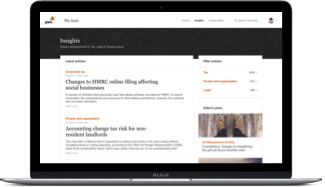Background
The case concerned the return filed by Mr Tooth in 2009 in respect of the tax year 2007/08 in which he claimed an employment loss carried back from 2008/09 as a result of his participation in a tax avoidance scheme called Romangate. Due to a problem with the software used by his advisors to produce the return, the employment loss was actually entered into the partnership pages of the return and a note, explaining the situation, was given in the white box disclosure space.
HMRC opened an enquiry under Schedule 1A TMA 1970, to enquire into the claim to carry back the employment loss. They did not open an enquiry under s9A TMA 1970 into the return. Following the Supreme Court decision in Cotter which related to the same tax avoidance scheme as used by Mr Tooth and which was found to be ineffective, HMRC sought payment for the overdue tax. However, Mr Tooth’s advisors pointed out that the Cotter decision specifically referred to the need for HMRC to enquire into the tax return via S9A TMA as Mr Tooth had taken account of the employment loss in his self-assessment calculation. Had Mr Tooth not included such a calculation, then following Cotter, an enquiry under s9A would not be required.
In 2014, HMRC issued a discovery assessment on the grounds that the return contained a partnership loss which was actually an employment loss and should have been included on the employment tax pages. An appeal was made to the First-Tier Tribunal which found that whilst the then assessing officer from HMRC had made a fresh discovery of the loss of tax in 2014, that loss of tax had not been brought about deliberately by Mr Tooth’s actions to include it in the return within the incorrect Partnership pages. HMRC appealed to the Upper Tribunal.

